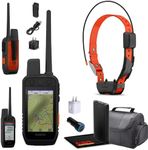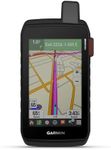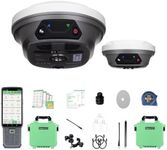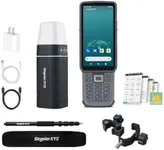Buying Guide for the Best Garmin Handheld Gps
Choosing the right Garmin handheld GPS can significantly enhance your outdoor adventures, whether you're hiking, geocaching, or exploring new territories. The key to finding the best fit for you is understanding the various specifications and how they align with your specific needs. Here are the essential specs to consider when selecting a Garmin handheld GPS.Display Size and ResolutionThe display size and resolution determine how easy it is to read maps and data on your GPS device. A larger display with higher resolution will provide clearer and more detailed visuals, which is particularly useful in complex terrains or for users with poor eyesight. Smaller displays are more compact and portable but may be harder to read. Choose a display size that balances readability with portability based on your typical usage.
Battery LifeBattery life is crucial, especially for long trips where recharging options are limited. Handheld GPS devices can have varying battery lives, from a few hours to several days. If you plan on extended outdoor activities, opt for a model with longer battery life or one that supports replaceable batteries. For shorter, day-long excursions, a device with moderate battery life may suffice.
Mapping and Navigation FeaturesMapping and navigation features include preloaded maps, the ability to add custom maps, and navigation aids like compass and altimeter. Advanced models offer detailed topographic maps and satellite imagery, which are beneficial for serious hikers and explorers. Basic models may only provide simple maps and waypoints. Consider how detailed you need your maps to be and whether you require additional navigation tools.
Durability and Waterproof RatingDurability and waterproof rating indicate how well the device can withstand harsh conditions. Look for devices with high IP ratings (e.g., IPX7 or higher) if you expect to use your GPS in wet or rugged environments. More durable models are ideal for extreme outdoor activities, while less rugged models may be sufficient for casual use in milder conditions.
Connectivity OptionsConnectivity options such as Bluetooth, Wi-Fi, and ANT+ allow your GPS to connect with other devices and accessories. This can enable features like live tracking, data syncing, and sharing routes with friends. If you value real-time updates and seamless integration with other gadgets, choose a model with robust connectivity options. For basic navigation needs, simpler models without these features may be adequate.
User Interface and Ease of UseThe user interface and ease of use determine how intuitive and straightforward the device is to operate. Touchscreen interfaces are generally easier to navigate but may be less responsive in wet conditions. Button-operated models can be more reliable in extreme weather. Consider your comfort level with technology and the environments in which you'll be using the device to choose the most user-friendly option for you.
Memory and StorageMemory and storage capacity affect how many maps, waypoints, and routes you can store on your device. More memory allows for greater flexibility and the ability to store detailed maps and extensive data. If you plan on exploring large areas or need to store a lot of information, opt for a model with higher storage capacity. For occasional use or smaller areas, less memory may be sufficient.




















